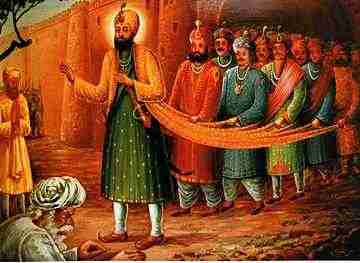Maharashtrian cuisine covers a range from being mild to very spicy dishes. Wheat, rice, jowar, bajri, vegetables, lentils and fruit form important components of Maharashtrian diet. Popular dishes include puran poli, ukdiche Modak, batata wada and “Kande-pohe”.
The staple dishes of Maharashtrian cuisine are based on bread and rice. The Thali consists of salt, wedge of lime, a fresh chutney, achar (pickle), a raita (vegetables or fruits in spiced yogurt), rice wafers and pakoras. Maharashtrians are particularly proud of their astonishing range and diversity of chutneys, achars, brine pickles and koshimbirs.
Another vital point of maharashtrian etiquette is arrangement of rice. the rice should never be in the middle of the thali. It should never be the haphazard mountain of rice. It should be placed to one side of the thali. Above the rice is thoordal puree. Next is one dry vegetable and one curry. In even the fanciest maharashtrian meal there will still be only two vegetable dishes on the right-hand side of the thali. The vegetables are never overcooked and the spices are always mild.
Another vital point of maharashtrian etiquette is arrangement of rice. the rice should never be in the middle of the thali. It should never be the haphazard mountain of rice. It should be placed to one side of the thali. Above the rice is thoordal puree. Next is one dry vegetable and one curry. In even the fanciest maharashtrian meal there will still be only two vegetable dishes on the right-hand side of the thali. The vegetables are never overcooked and the spices are always mild.
Popular Dishes
Sweets :
- Puran poli
- Gulachi Poli
- Modak
- Karanji
- Gulab Jamun
- Anarsa
- Chirota
- Basundi
- Shrikhand
- Laddu
Snacks :
- Chivda
- Poha
- Upma
- Surali wada
- Vada pav
- Pav Bhaji
- Thalipeeth
- Bakarwadi
- Misal Pav
- Kanda Bhaji
Curries:
- “Amti” (Sweet and Sour Lentil Curry, made with Tamarind and Jaggery)
- Batatyachi Bhaji (Potato preparations)
- Vangyache bharit (Baingan Bharta)
- Dalimbya (Beans)
- Farasbichi Bhaji
- Palkachi Takatli Bhaji (Spinach cooked in buttermilk)
- Kelphulachi Bhaji (Banana/plantain bloom)
- Fansachi Bhaji ( Jackfruit preparation)
- Walache Birdha
Have you checked these : Kashmiri Food, Kerala Food, Karnataka Food, Gujarati Food, Bengali Food,Andhra Food

